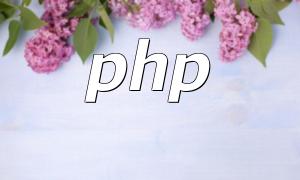PHP is a widely used programming language, powerful yet susceptible to security risks. To prevent malicious attacks and data breaches, it is essential to optimize the PHP environment's security configuration. This article systematically introduces several important security optimization strategies.
In production environments, PHP’s error reporting can expose sensitive information, providing attackers with opportunities. Therefore, error reporting should be disabled to minimize risks. This can be achieved by disabling error display in the php.ini file.
To prevent unauthorized access to sensitive configuration files, they should be placed in directories not directly accessible by the web server and set with strict access permissions to ensure only authorized programs can read them.
PHP enables many extensions by default, some of which may have security vulnerabilities. Disabling unused extensions reduces the attack surface and enhances overall security. This can be done by modifying the php.ini file.
; Disable extensions ; extension=exif.so ; extension=gd.so
Proper error log configuration not only helps quickly locate issues but also effectively monitors potential security threats. It is recommended to set appropriate log levels, save logs in secure locations, and regularly review log contents.
; Set error log file path error_log=/var/log/php_errors.log ; Enable error logging log_errors=On error_reporting=E_ALL
Session management directly affects user identity security and requires proper session parameter settings such as enabling secure cookie flags, limiting session lifetime, and preventing session fixation attacks to protect user data.
User input is one of the most common sources of security vulnerabilities. All inputs must be strictly validated and filtered to prevent SQL injection, cross-site scripting (XSS), and other attacks. Common practices include using parameterized queries, input escaping, and whitelist validation.
Reasonable configuration of PHP security settings can significantly enhance application protection. Disabling error reporting, protecting configuration files, disabling unnecessary extensions, logging errors, strengthening session security, and filtering user inputs form the core of PHP security optimization. Developers should continuously optimize and update configurations based on actual needs to ensure secure and stable system operation.
When implementing optimizations, it is recommended to refer to official PHP documentation or consult professional security experts to ensure scientific and effective configuration.









